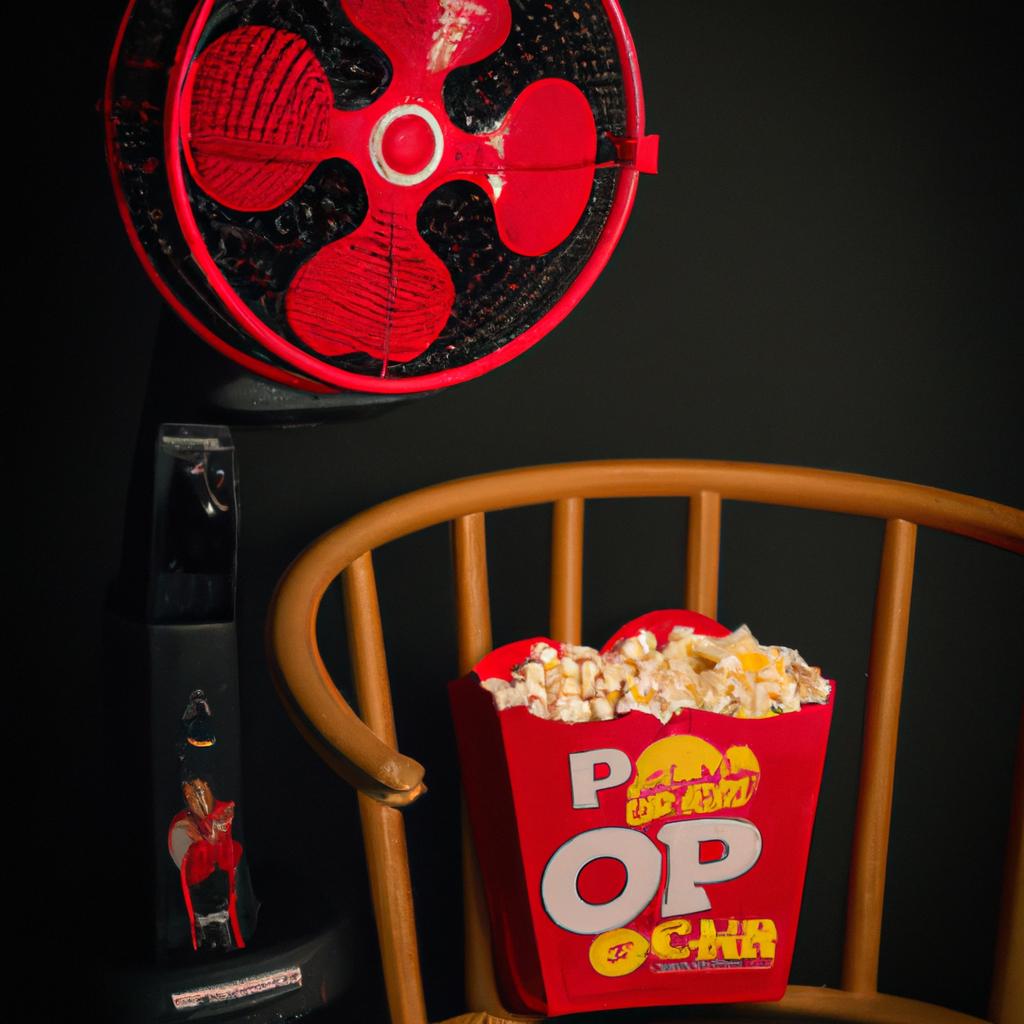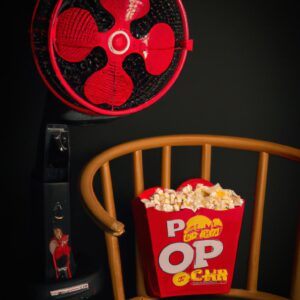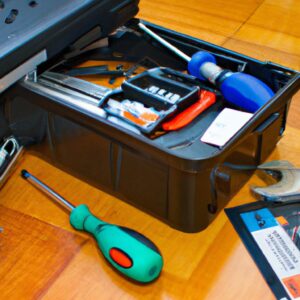Create a Home Theater on a Budget – Learn How Here!

Creating a Budget-Friendly Home Theater System
If you’re looking for an amazing home theater experience without breaking the bank, then creating a budget-friendly home theater system is a great option. In this guide, we’ll take a look at the different components and accessories that make up a home theater system, review some budget-friendly options, talk about setting a realistic budget, and discuss how to control the environment of your home theater. By the end of this guide, you’ll be ready to create a budget-friendly home theater system that you’ll love.
Explaining Home Theater Components
A home theater system consists of many components, that all work together to create the optimal viewing and audio experience. Audio components include a receiver, amplifiers, speakers, and subwoofers. Visual components include a display device (such as a television or projector) and other devices connected to the display such as a streaming device, blu-ray player, or gaming console.
The receiver is the central control of the home theater system, connecting all your audio and video components together and allowing you to control them with one remote. An amplifier is then used to power the speakers, which produce the sound. Speakers come in various sizes and shapes, and are designed to produce high, mid-range, and low frequencies for different types of sounds. Lastly, a subwoofer can be added for an especially immersive experience, as it does not necessarily add “volume” but deeper tones that vibrate within the room and enhance the listening experience.
The display device is the main visual component of the home theater system. This is often a television or a projector, depending on the space available and the user’s preference. Other components can be connected to the display, such as streaming devices (like Roku or Fire TV), Blu-Ray players, and gaming consoles. All these components can be controlled from the receiver, allowing the user to switch between inputs easily and without having to use multiple remotes.
Setting a Budget
Creating a budget-friendly home theater system is possible with some smart planning. When setting your budget for a home theater system, it’s important to know what components you need and how much they will cost. It’s also important to factor in installation costs and other related expenses.
To figure out your budget, start by deciding which components are non-negotiable, such as an HDTV or surround sound speakers. Research these items online and look at the average prices. Once you have an idea of the components’ cost, add them up and see if it fits within your budget. Don’t forget to allocate money for wires and mounting hardware.
It’s also important to leave yourself some wiggle room for unexpected expenses. This way, if something does not go according to plan, you can still afford to purchase the necessary equipment. Also, factor in any taxes and shipping fees that may apply.
Audio Equipment for a Budget-Friendly Home Theater System
When it comes to creating a budget-friendly home theater system, one of the most important components to consider is audio equipment. Whether you’re looking for a surround sound system or a multi-room audio system, there are a variety of options available. In this section, we’ll provide an overview of some audio equipment choices that will help you achieve your budget-friendly home theater goals.
When picking out speakers, the two main types to consider are powered and unpowered speakers. Powered speakers, also known as active speakers, have built-in amplifiers and require fewer connections to set up. Unpowered speakers, also known as passive speakers, require an external amplifier in order to work. The type of speaker you choose will depend on your budget and the size of the room you are using for your home theater.
You can also opt for wired or wireless speakers. Wired speakers need cables in order to connect them to your audio devices, making them more difficult to install. Wireless speakers, on the other hand, are easier to install since they don’t require cables. However, they tend to be more expensive than wired speakers and can experience transmission interference if not placed in a good location.
In addition to speakers, you will also need to pick out an audio receiver. An audio receiver acts as a hub for all your audio connections and allows you to control the sound from different sources. When choosing an audio receiver, make sure to check the number of channels it supports and its power rating.
Lastly, you will need to decide on an audio format. There are three main audio formats to choose from: Dolby Digital, DTS, and Dolby Atmos. Each of these formats provides a different level of sound quality and immersive audio experience. It is important to research each of these formats and decide which one best fits your needs and budget.
By carefully considering the various audio equipment options available, you can create a budget-friendly home theater system that meets your audio needs without breaking the bank.
Visual Components
When it comes to creating a budget-friendly home theater system, the visuals are just as important as the audio. There are several display device options available and choosing the right one for your needs is essential. Some of the options include televisions, projectors, and computer monitors. It’s also important to consider the display resolution you want. Higher resolution means a sharper picture, but it will also cost more.
Connecting and Calibrating Components
Creating a home theater system from scratch can be daunting, especially if you are new to the process. There are many components to consider and a lot of wiring involved. But with the right tools and a bit of patience, you will be able to get your home theater up and running in no time.
The first step is to connect all the components of your home theater system. This can include connecting your TV, audio receiver, speakers, DVD player, and other devices. It is important to read the instructions included in the manuals of each component to make sure that they are connected properly.
Once all the components are connected, you will need to calibrate them. This involves adjusting the settings on each device to ensure optimal performance. You may need to adjust the volume levels, experiment with the various sound modes, or change the picture settings. Again, it is important to follow the instructions in the manuals so that everything is set up correctly.
Home Theater Accessories
Adding the right accessories to your budget-friendly home theater system can take it from good to great. Smart remotes are a great way to reduce clutter, while soundbars can provide a much richer audio experience. If your home theater system setup allows, you could even include an automated lighting system that can be used for added ambiance.
Some other accessories that could be purchased include HDMI cables, streaming devices, media players, and more. Though these are all optional, they can be used to further enhance the user experience. Consider purchasing accessories that add value to your home theater experience, without breaking the bank.
Having the right accessories can make a big difference in how your budget-friendly home theater system operates. With some research and experimentation, you can find the perfect combination of accessories that will match your needs and budget.
Controlling the Environment
Creating the perfect home theater experience includes making sure the environment is comfortable, quiet and free of distractions. Setting up the space correctly is the first step to creating an enjoyable movie-viewing atmosphere.
One way to create a distraction-free viewing area is to invest in soundproofing panels. These panels can help absorb unwanted outside sounds that may disrupt the movie-viewing experience. It is also important to make sure the room is as dark as possible with no bright lights shining on the screen. By doing this, the viewer will be able to focus on the visuals without being distracted by extraneous sources of light.
It is also important to keep the temperature in the room comfortable. If the room is too warm or cold, it can take away from the viewing experience. The ideal temperature for a home theater room should be at least 68°F.
With proper planning and consideration, viewers can create an enjoyable home theater experience without breaking the bank. Distractions can take away from a home theater experience, so choosing the right environment can make all the difference.
Automation and Voice Control Options for Budget-Friendly Home Theater Systems
Automation and voice control can make a home theater system more convenient and easier to use. Automation allows you to control your home theater system with just a few clicks of a button, while voice control makes it so commands can be activated simply by using voice commands.
Some budget-friendly home theater systems are equipped with advanced automation and voice control options. With these systems, you can control everything from sound volume levels to lighting in the home theater room. Advanced automation and voice control options can also be purchased separately and installed into existing home theater systems.
Automation and voice control offer convenience and ease of use, but there are some security risks to be aware of. It is important to take extra precautions to keep your home theater system secure if automation and voice control features are used.
Home Theater Security
Setting up a home theater can be expensive, so it is important to make sure you are taking the necessary steps to keep your system safe and secure. Here are some tips to help protect your budget-friendly home theater system:
- Protect against physical theft by locking away all components. This can be done with a cabinet that is securely attached to the wall or floor.
- Make sure all your devices are password-protected. It’s a good idea to choose strong passwords that contain a combination of letters, numbers, and symbols.
- Keep electronic components, cables, and power cords organized to avoid tripping hazards. It’s best to use cable ties or zip ties to bundle cables together and label them for easy identification.
- Install surge protectors to protect your equipment from power spikes.
- Use an antivirus program to keep your home theater system free of malware and viruses.
- Regularly update your home theater components to ensure they are using the latest security measures.
These tips should help you keep your home theater secure so that you can relax and enjoy all the great entertainment your system has to offer.
Conclusion
Creating a budget-friendly home theater system can be an exciting challenge. People can create a full-fledged home theater system for a relatively low budget. The key to success is understanding the types of components needed, by setting a realistic budget, and taking the necessary time to connect and calibrate the components. Additional accessories can also help create a more enjoyable experience. Home theater security measures should also be taken to protect the system.
By following this guide, readers should now understand the basics of creating a budget-friendly home theater system. We hope we have provided enough resources and useful tips to get started. For more in-depth information on certain topics, please refer to the recommended links below.
- Audio Equipment Options
- Visual Components
- Connecting and Calibrating Components
- Controlling the Environment
- Automation and Voice Control
- Home Theater Security
If you have any further questions or observations about budget-friendly home theater systems, please comment below or contact us directly.
Wrapping Up the Guide to Creating a Budget-Friendly Home Theater System
We hope that this guide has provided you with some useful tips and information on how to create an affordable home theater system. Whether you are a rookie or a veteran home theater enthusiast, there are plenty of ways to build a budget-friendly set up without sacrificing too much in terms of audio and visual quality. We’ve outlined components, connections, accessories, automation, and security tips to help you get your setup up and running like a dream. Now it’s time to bring your friends and family together for an enjoyable movie night!
We invite you to continue the conversation about home theater systems in the comments section below. Let us know what different methodologies have worked for you and don’t forget to share any additional resources you may have found during your research.
comments: 0






